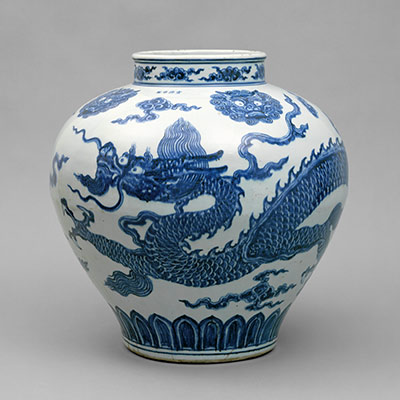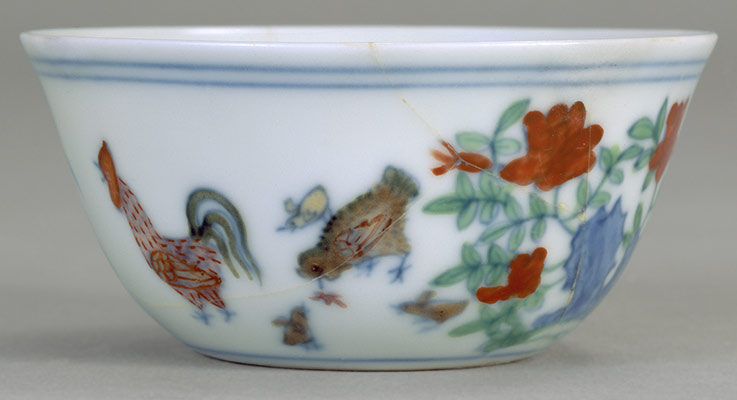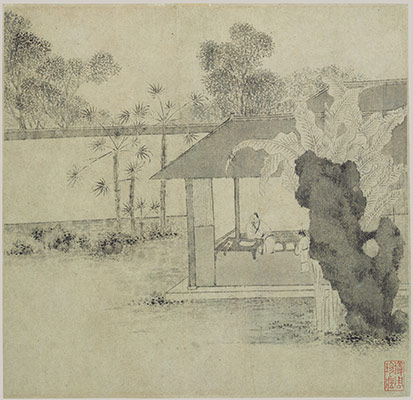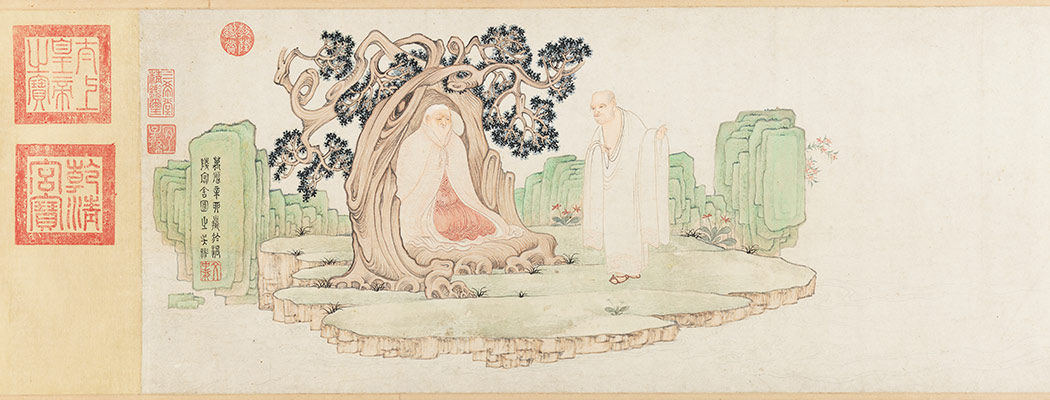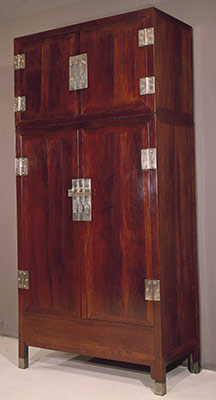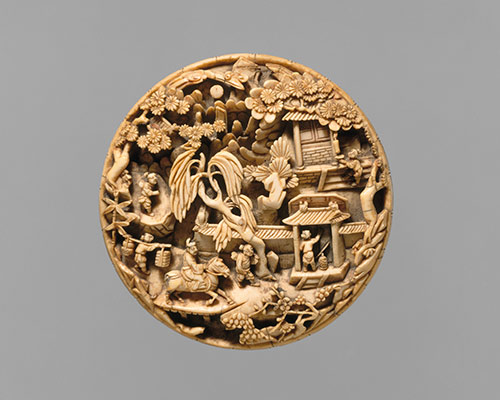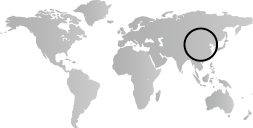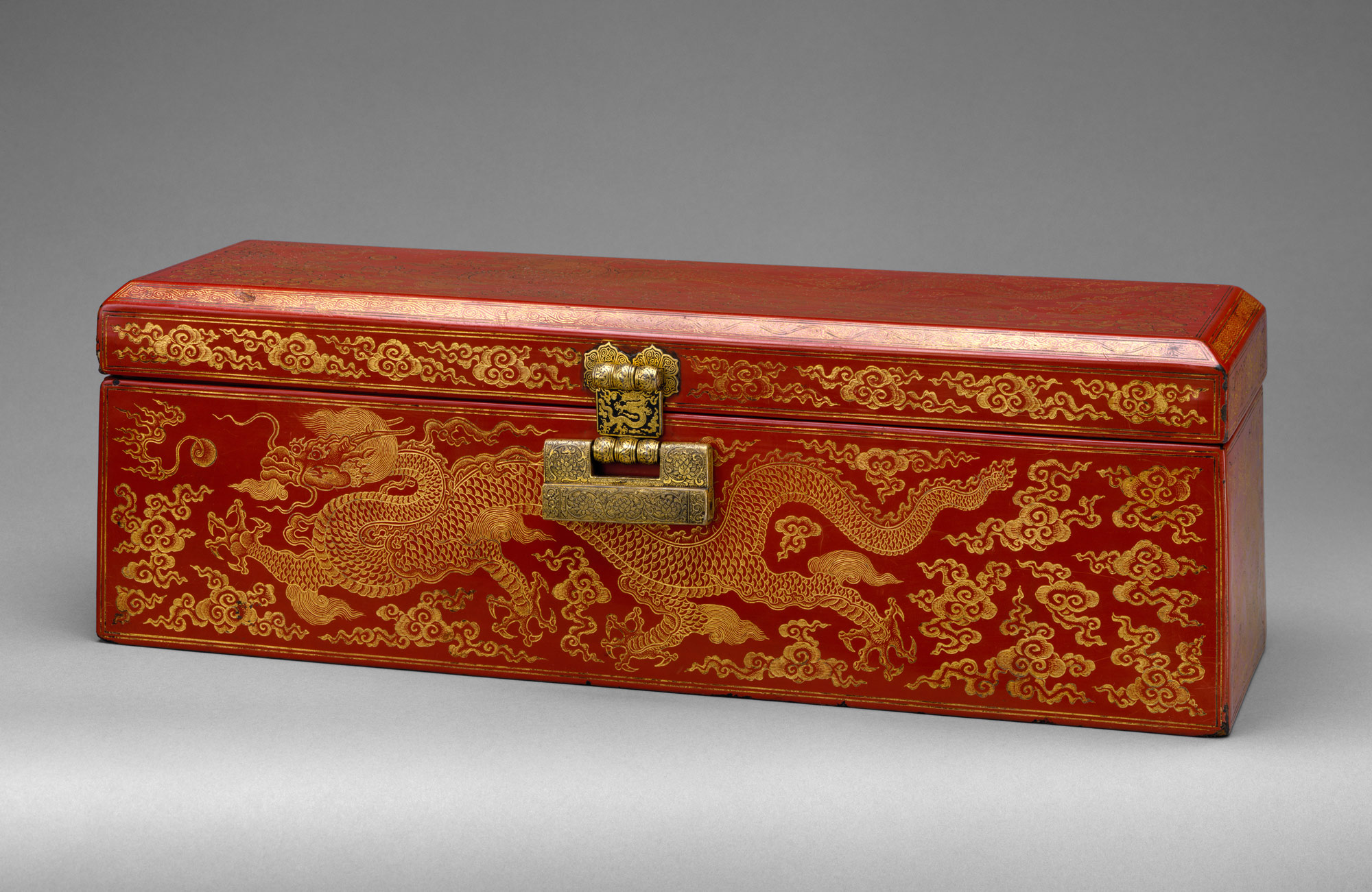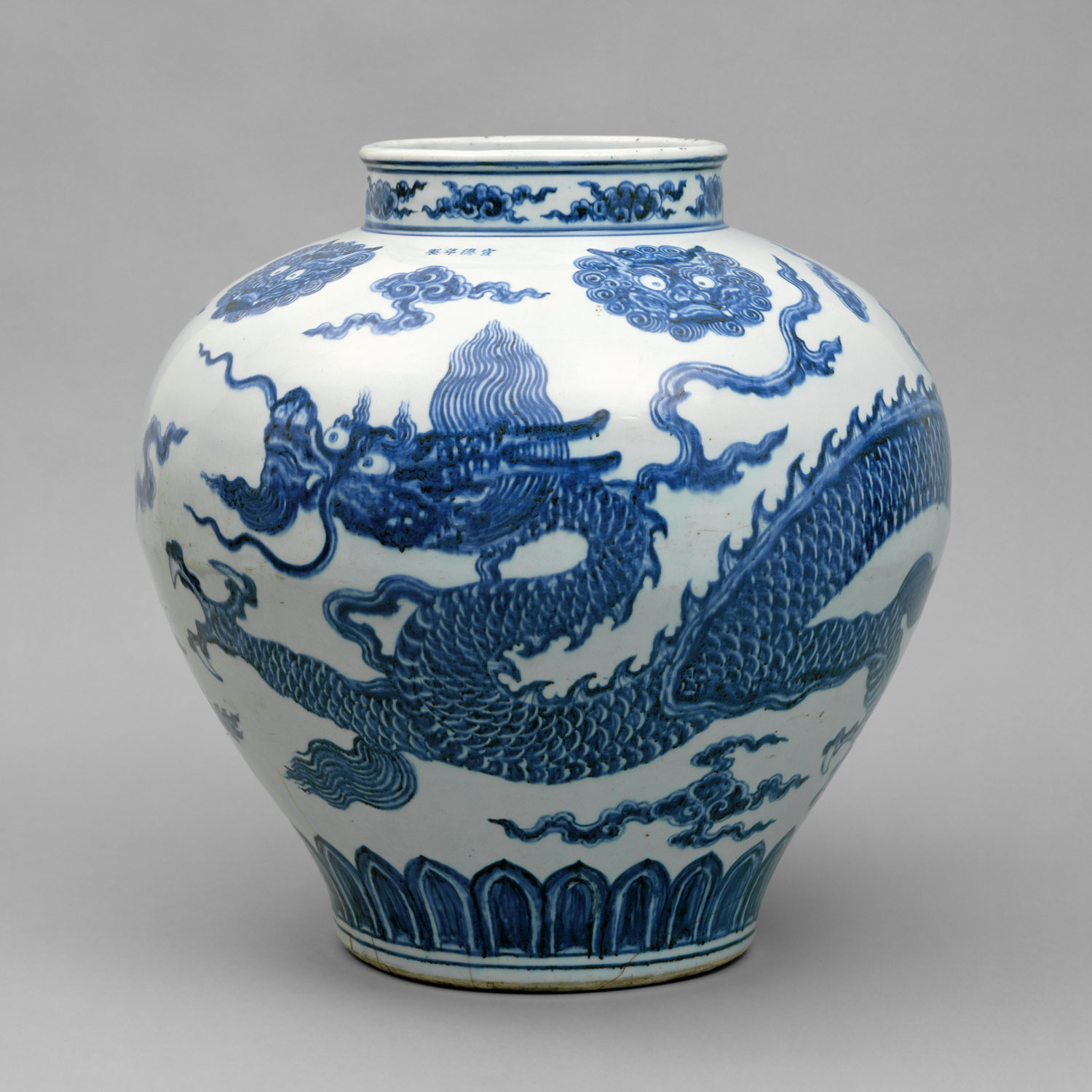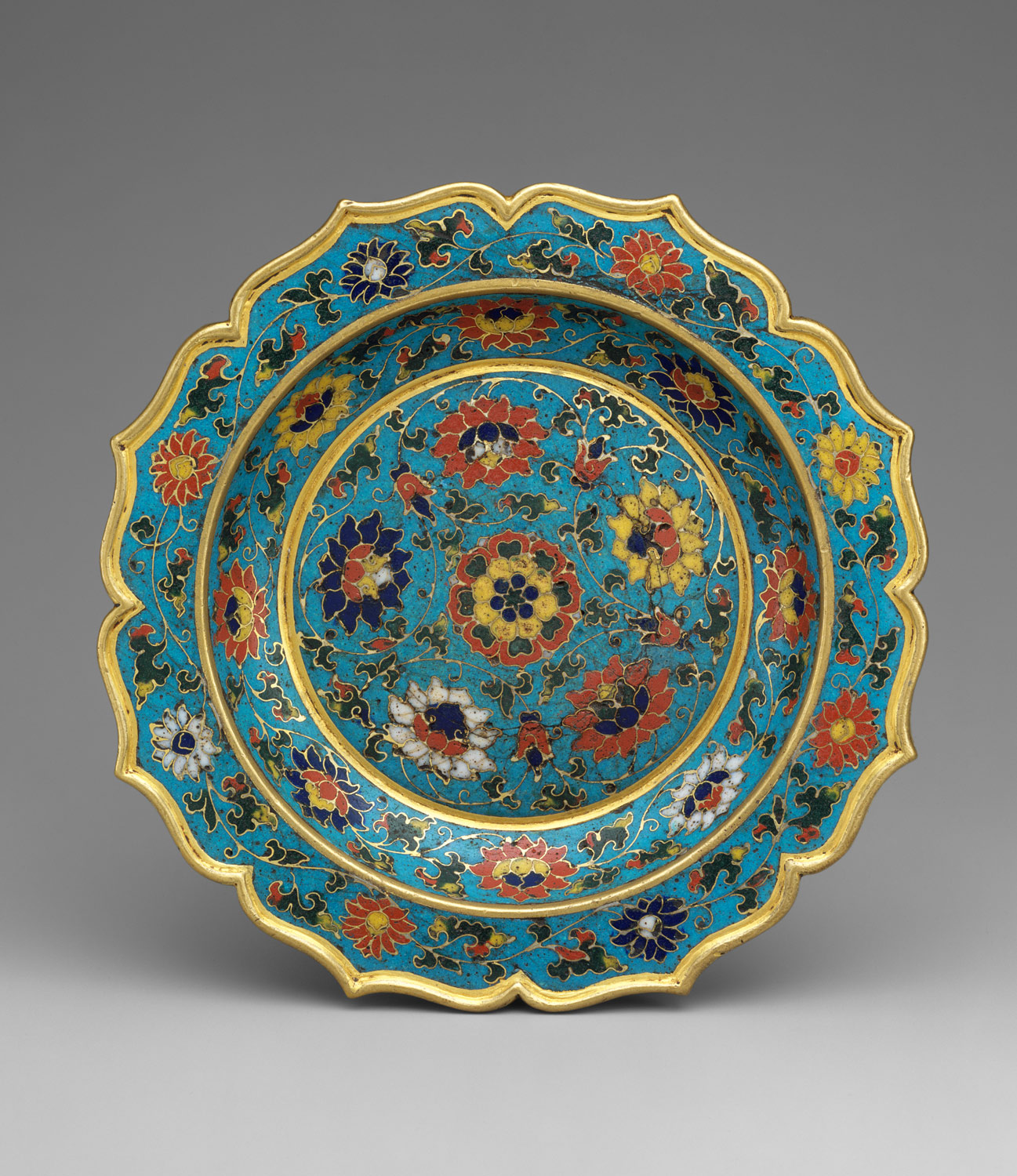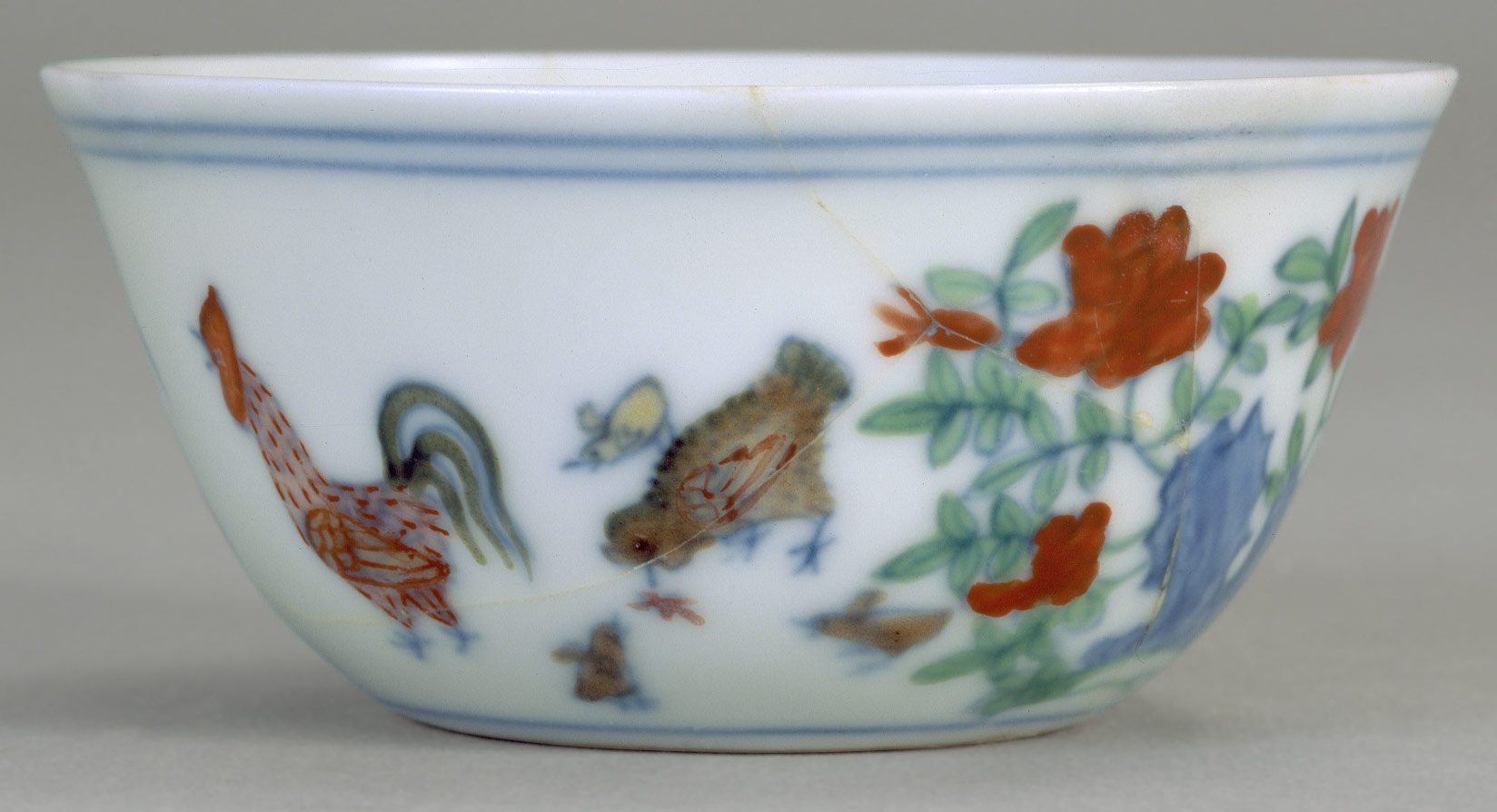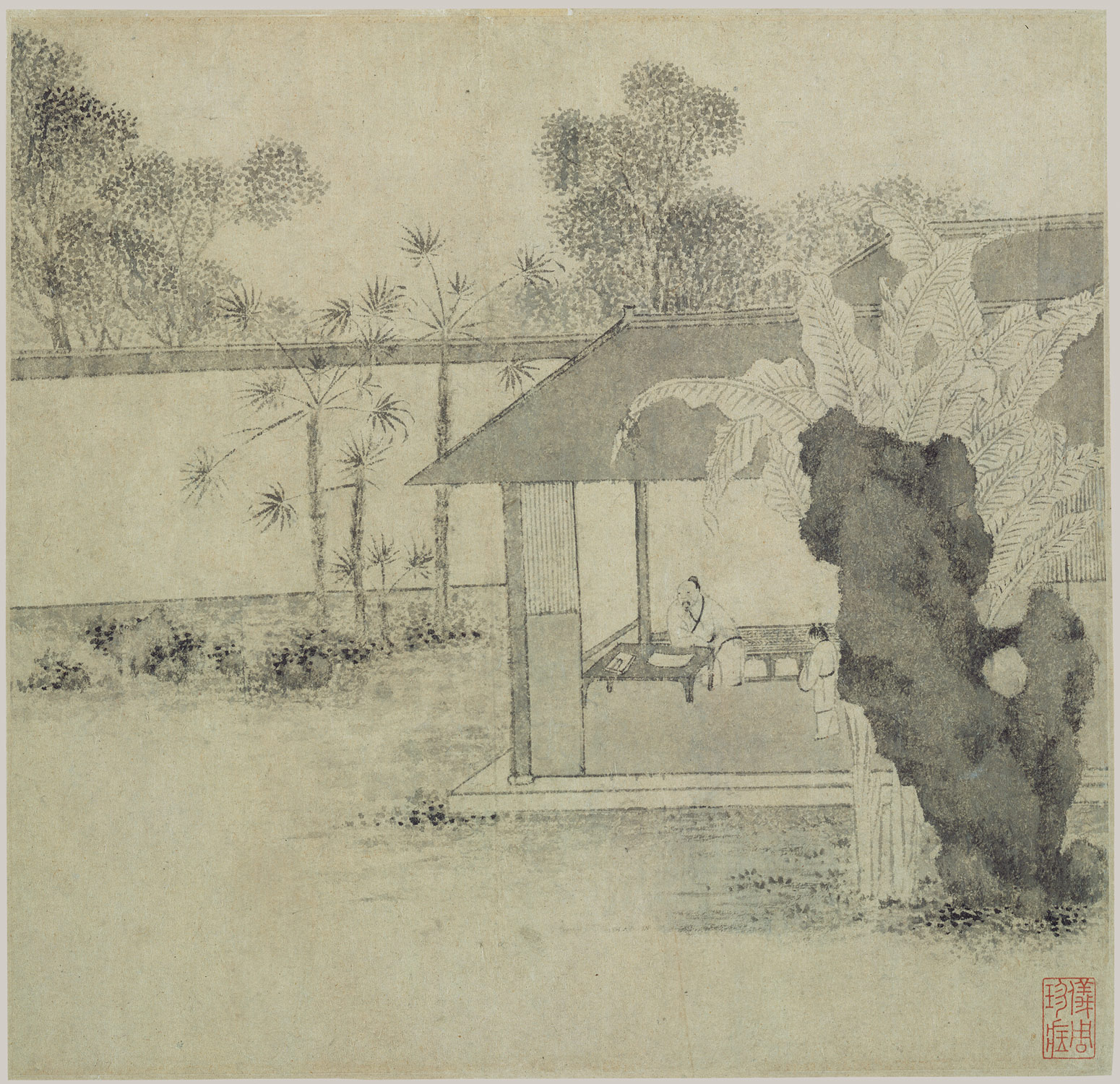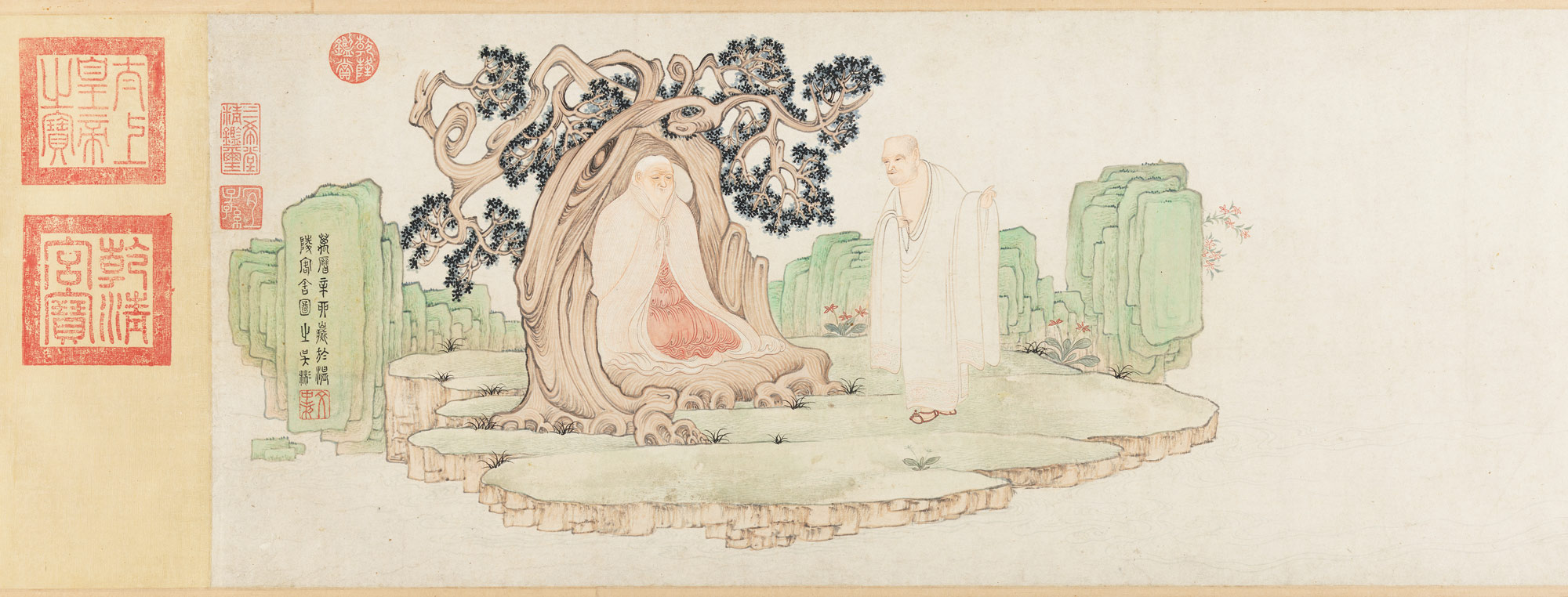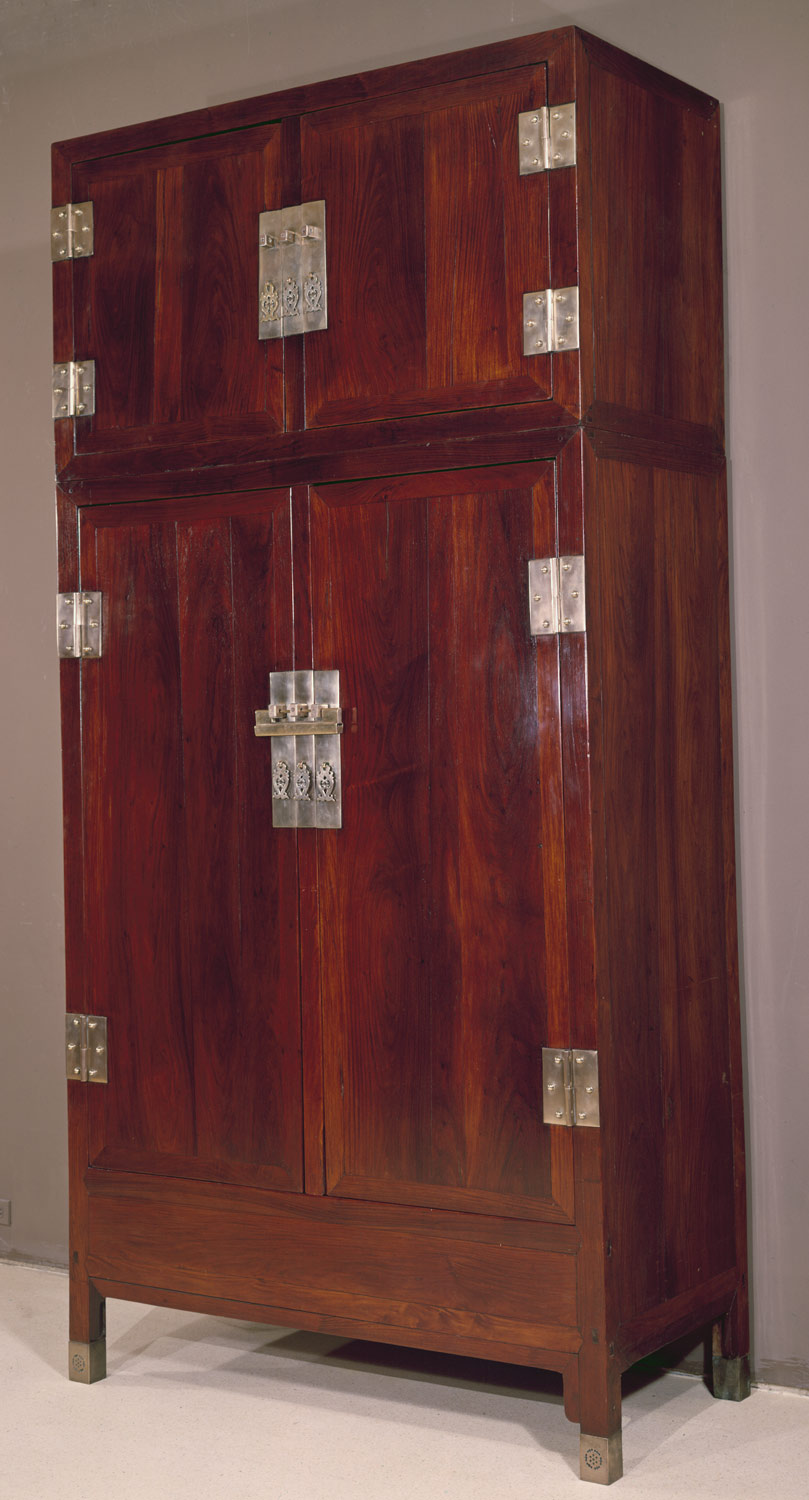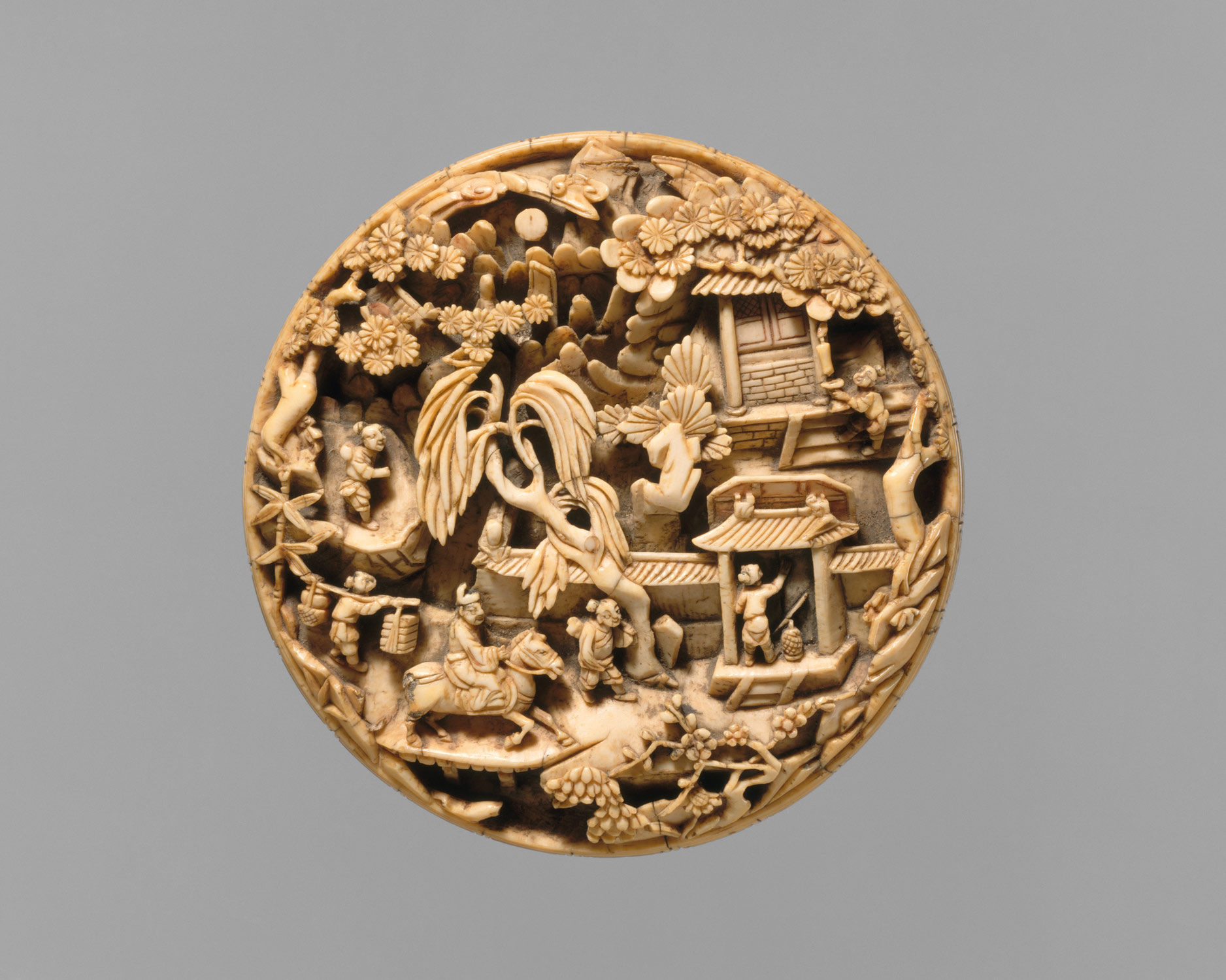The establishment of the Ming dynasty in 1368 marks the return of native rule over all of China for the first time in centuries. An interest in cultural restoration characterizes the first part of the dynasty, when the court sets the style for ceramics, lacquers, textiles, painting, and other arts. The delicate porcelain bodies and elegant underglaze cobalt blue decorations on imperial wares made for the Xuande (r. 1426–35) and Chenghua (r. 1465–87) emperors are among the most famous blue-and-white wares in ceramic history. Painters, working at the court, or professionally, or as a means of self-cultivation, derive inspiration from earlier traditions found in the Northern Song (960–1127), Southern Song (1127–1279), and Yuan (1271–1368) periods.
In the sixteenth century, the development of massive manufacturing industries, such as those for porcelains and textiles, spurs great prosperity and the rise of a more educated populace, particularly in southern China. New regional centers arise in response to the private patronage of arts by wealthy officials and merchants in cities such as Nanjing and Suzhou. The widespread printing of books and the development of new types of painting and less formal designs in the decorative arts reflect these economic and cultural changes.


